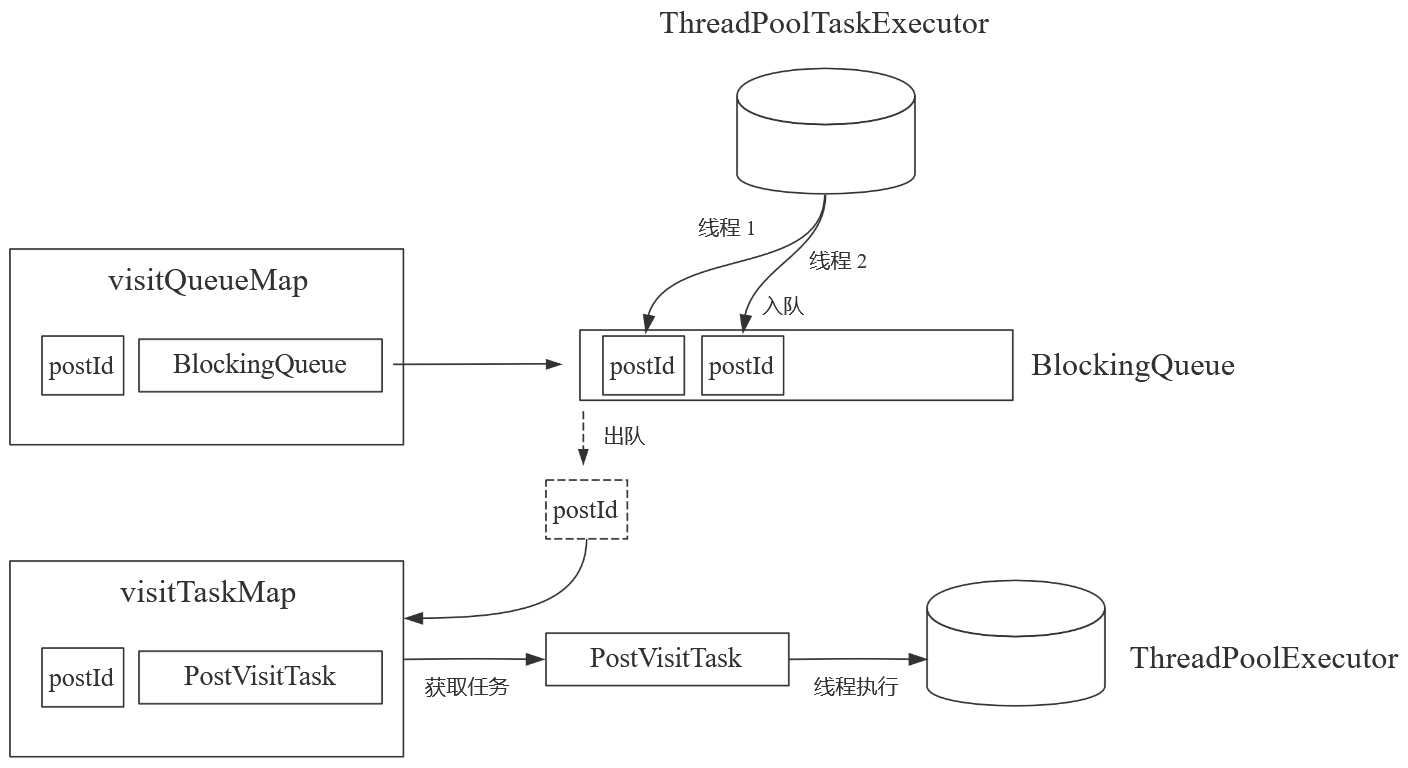? 优质资源分享 ?
| 学习路线指引(点击解锁) | 知识定位 | 人群定位 |
|---|---|---|
| ? Python实战微信订餐小程序 ? | 进阶级 | 本课程是python flask+微信小程序的完美结合,从项目搭建到腾讯云部署上线,打造一个全栈订餐系统。 |
| ?Python量化交易实战? | 入门级 | 手把手带你打造一个易扩展、更安全、效率更高的量化交易系统 |
目录
基本介绍
Halo 项目中,当用户或博主执行某些操作时,服务器会发布相应的事件,例如博主登录管理员后台时发布 "日志记录" 事件,用户浏览文章时发布 "访问文章" 事件。事件发布后,负责监听的 Bean 会做出相应的处理,这种设计称为事件监听机制,其作用是可以实现业务逻辑之间的解耦,提高程序的扩展性和可维护性。
ApplicationEvent 和 Listener
Halo 使用 ApplicationEvent 和 Listener 来实现事件的发布与监听,二者由 Spring 提供,其中 ApplicationEvent 是需要发布的事件,Listener 则是监听器。用户可在监听器中自定义事件的处理逻辑,当事件发生时,只需要将事件发布,监听器会根据用户定义的逻辑自动处理该事件。
定义事件
事件需要继承 ApplicationEvent 类,且需要重载构造方法,以 LogEvent 为例:
public class LogEvent extends ApplicationEvent {
private final LogParam logParam;
/**
* Create a new ApplicationEvent.
*
* @param source the object on which the event initially occurred (never {@code null})
* @param logParam login param
*/
public LogEvent(Object source, LogParam logParam) {
super(source);
// Validate the log param
ValidationUtils.validate(logParam);
// Set ip address
logParam.setIpAddress(ServletUtils.getRequestIp());
this.logParam = logParam;
}
public LogEvent(Object source, String logKey, LogType logType, String content) {
this(source, new LogParam(logKey, logType, content));
}
public LogParam getLogParam() {
return logParam;
}
}
构造方法中的 source 指的是触发事件的 Bean,也称为事件源,通常用 this 关键字代替,其它参数可由用户任意指定。
发布事件
ApplicationContext 接口的 publishEvent 方法可用于发布事件,例如博客初始化完成后发布 LogEvent 事件(InstallConroller 中的 installBlog 方法):
public BaseResponse installBlog(@RequestBody InstallParam installParam) {
// 省略部分代码
eventPublisher.publishEvent(
new LogEvent(this, user.getId().toString(), LogType.BLOG\_INITIALIZED, "博客已成功初始化")
);
return BaseResponse.ok("安装完成!");
}
监听器
监听器的创建方式有多种,例如实现 ApplicationListener 接口、SmartApplicationListener 接口,或者添加 @EventListener 注解。项目中使用注解来定义监听器,如 LogEventListener:
@Component
public class LogEventListener {
private final LogService logService;
public LogEventListener(LogService logService) {
this.logService = logService;
}
@EventListener
@Async
public void onApplicationEvent(LogEvent event) {
// Convert to log
Log logToCreate = event.getLogParam().convertTo();
// Create log
logService.create(logToCreate);
}
}
用户可在 @EventListener 注解修饰的方法中定义事件的处理逻辑,方法接收的参数为监听的事件类型。@Async 注解的作用是实现异步监听,以上文中的 installBlog 方法为例,如果不添加该注解,那么程序需要等待 onApplicationEvent 方法执行结束后才能返回 "安装完成!"。加上 @Async 注解后,onApplicationEvent 方法会在新的线程中执行,installBlog 方法可以立即返回。若要使 @Async 注解生效,还需要在启动类或配置类上添加 @EnableAsync 注解。
事件处理
接下来我们分析一下 Halo 项目中不同事件的处理过程:
日志记录事件
日志记录事件 LogEvent 由 LogEventListener 中的 onApplicationEvent 方法处理,该方法的处理逻辑非常简单,就是在 logs 表中插入一条系统日志,插入的记录用于在管理员界面展示:
[外链图片转存失败,源站可能有防盗链机制,建议将图片保存下来直接上传(img-zqhBsBax-1651120720752)(https://img2022.cnblogs.com/blog/2430605/202204/2430605-20220421220450574-1033705845.png)]
需要注意的是,不同类型日志的 logKey、logType 以及 content 会有所区别,例如用户登录时,logKey 为用户的 userName,logType 为 LogType.LOGGED_IN,content 为用户的 nickName:
eventPublisher.publishEvent(
new LogEvent(this, user.getUsername(), LogType.LOGGED_IN, user.getNickname()));
发布文章时,logKey 为文章的 id,logType 为 LogType.POST_PUBLISHED,content 为文章的 title:
LogEvent logEvent = new LogEvent(this, createdPost.getId().toString(),
LogType.POST_PUBLISHED, createdPost.getTitle());
eventPublisher.publishEvent(logEvent);
文章访问事件
文章访问事件 PostVisitEvent 由 AbstractVisitEventListener 中的 handleVisitEvent 方法处理,该方法的处理的逻辑是将当前文章的访问量加一:
protected void handleVisitEvent(@NonNull AbstractVisitEvent event) throws InterruptedException {
Assert.notNull(event, "Visit event must not be null");
// 获取文章 id
// Get post id
Integer id = event.getId();
log.debug("Received a visit event, post id: [{}]", id);
// 如果当前 postId 具有对应的 BlockingQueue, 那么直接返回该 BlockingQueue, 否则为当前 postId 创建一个新的 BlockingQueue
// Get post visit queue
BlockingQueue postVisitQueue =
visitQueueMap.computeIfAbsent(id, this::createEmptyQueue);
// 如果当前 postId 具有对应的 PostVisitTask, 不做任何处理, 否则为当前 postId 创建一个新的 PostVisitTask 任务
visitTaskMap.computeIfAbsent(id, this::createPostVisitTask);
// 将当前 postId 存入到对应的 BlockingQueue
// Put a visit for the post
postVisitQueue.put(id);
}
上述方法首先获取当前被访问文章的 postId,然后查询 visitQueueMap 中是否存在 postId 对应的阻塞队列(实际类型为 LinkedBlockingQueue),如果存在那么直接返回该队列, 否则为当前 postId 创建一个新的阻塞队列并存入到 visitQueueMap。接着查询 visitTaskMap 中是否存在 postId 对应的 PostVisitTask 任务(任务的作用是将文章的访问量加一),如果没有,那么就为 postId 创建一个新的 PostVisitTask 任务,并将该任务交给线程池 ThreadPoolExecutor(Executors.newCachedThreadPool())执行。之后将 postId 添加到对应的阻塞队列,这一步的目的是管理 PostVisitTask 任务的执行次数。
visitQueueMap 和 visitTaskMap 都是 ConcurrentHashMap 类型的对象,使用 ConcurrentHashMap 是为了保证线程安全,因为监听器的事件处理方法被 @Async 注解修饰。默认情况下,@Async 注解修饰的方法会由 Spring 创建的线程池 ThreadPoolTaskExecutor 中的线程执行,因此当某一篇文章被多个用户同时浏览时,ThreadPoolTaskExecutor 中的多个线程可能会同时在 visitQueueMap 中创建阻塞队列,或在 visitTaskMap 中创建 PostVisitTask 任务。
下面看一下 PostVisitTask 任务中 run 方法的处理逻辑:
public void run() {
while (!Thread.currentThread().isInterrupted()) {
try {
BlockingQueue postVisitQueue = visitQueueMap.get(id);
Integer postId = postVisitQueue.take();
log.debug("Took a new visit for post id: [{}]", postId);
// Increase the visit
basePostService.increaseVisit(postId);
log.debug("Increased visits for post id: [{}]", postId);
} catch (InterruptedException e) {
log.debug(
"Post visit task: " + Thread.currentThread().getName() + " was interrupted",
e);
// Ignore this exception
}
}
log.debug("Thread: [{}] has been interrupted", Thread.currentThread().getName());
}
线程池 ThreadPoolExecutor 中的一个线程处理该任务:
- 从 visitQueueMap 获取 postId 对应的阻塞队列(这里的 id 其实就是 postId),并取出队首元素。
- 将 postId 对应的文章的点赞量加一。
- 只要线程不被中断,就一直重复步骤 1 和步骤 2,如果队列为空,那么线程进入阻塞。
综上,文章访问事件的处理流程总结如下:
当 id 为 postId 的文章被访问时,系统会为其创建一个 LinkedBlockingQueue 类型的阻塞队列和一个负责将文章点赞量加一的 PostVisitTask 任务。然后 postId 入队,线程池 ThreadPoolExecutor 分配一个线程执行 PostVisitTask 任务,阻塞队列有多少个 postId 该任务就执行多少次。

结语
事件监听机制是一个非常重要的知识点,实际开发中,如果某些业务处理起来比较耗时,且与主要业务的关联性并不是很强,那么可以考虑做任务拆分,利用事件监听机制将串行执行异步化,改为并行执行(当然也可以使用消息队列)。Halo 中还有新增评论、主题更新等事件,这些事件的的处理思路与文章访问事件相似,所以本文就不再过多陈述了 ( ⊙‿⊙)。
作者:John同学欢迎任何形式的转载,但请务必注明出处。文章和代码如有不当之处,欢迎批评指正!
转载请注明:xuhss » Halo 开源项目学习(六):事件监听机制